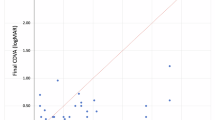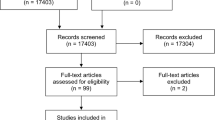Abstract
Purpose:
To investigate independent risk factors for contact lens-related microbial keratitis in Singapore and estimate their impact on disease load.
Methods:
Cases were contact lens wearers presenting to Singapore National Eye Centre with microbial keratitis between 2008 and 2010. Community contact lens wearers were recruited as controls. All wearers completed a previously validated questionnaire describing contact lens wear history, hygiene and compliance habits, and demographics. Risk factors significant in univariate analysis (P<0.2) were evaluated in a multivariate model.
Results:
In all, 58 cases of microbial keratitis and 152 contemporaneous controls were identified. When controlling for other variables, Chinese had a 7 × lower risk compared with other races (95% CI: 2.3–21.3, P=0.001). Those aged between 25 and 44 years were at 3 × increased risk compared with younger wearers (95% CI: 1.1–9.6, P=0.04). Occasional overnight contact lens wear (less often than one night per week) was associated with a 4 × higher risk (95% CI: 1.2–15.4, P=0.03) compared with daily use. Not washing hands before handling was associated with a 13 × increased risk (95% CI: 1.9–84.8, P=0.008). Use of multipurpose solution A carried a 16 × higher risk compared with hydrogen peroxide (95% CI: 1.5–174.0, P=0.02). The combined PAR% for modifiable risk factors (occasional overnight wear, not washing of hands, and MPS A) was 82%.
Conclusions:
Consistent with previous findings, independent risk factors for contact lens-related microbial keratitis include poor hand hygiene, occasional overnight wear, and type of lens care solution. Prolonged overnight or extended contact lens use was infrequent in this population.
Similar content being viewed by others
Log in or create a free account to read this content
Gain free access to this article, as well as selected content from this journal and more on nature.com
or
References
Stapleton F, Keay L, Jalbert I, Cole N . The epidemiology of contact lens related infiltrates. Optom Vis Sci 2007; 84 (4): 257–272.
Poggio EC, Glynn RJ, Schein OD, Seddon JM, Shannon MJ, Scardino VA et al. The incidence of ulcerative keratitis among users of daily-wear and extended-wear soft contact lenses. New Engl J Med 1989; 321 (12): 779–783.
Cheng KH, Leung SL, Hoekman HW, Beekhuis WH, Mulder PG, Geerards AJ et al. Incidence of contact-lens-associated microbial keratitis and its related morbidity. Lancet 1999; 354 (9174): 181–185.
Lam DS, Houang E, Fan DS, Lyon D, Seal D, Wong E . Incidence and risk factors for microbial keratitis in Hong Kong: comparison with Europe and North America. Eye 2002; 16 (5): 608–618.
Morgan PB, Efron N, Hill EA, Raynor MK, Whiting MA, Tullo AB . Incidence of keratitis of varying severity among contact lens wearers. Br J Ophthalmol 2005; 89 (4): 430–436.
Stapleton F, Keay L, Edwards K, Naduvilath T, Dart JK, Brian G et al. The incidence of contact lens-related microbial keratitis in Australia. Ophthalmology 2008; 115 (10): 1655–1662.
Dart JK, Stapleton F, Minassian D . Contact lenses and other risk factors in microbial keratitis. Lancet 1991; 338 (8768): 650–653.
Stapleton F, Dart JK, Minassian D . Risk factors with contact lens related suppurative keratitis. CLAO J 1993; 19 (4): 204–210.
Schein OD, Glynn RJ, Poggio EC, Seddon JM, Kenyon KR . The relative risk of ulcerative keratitis among users of daily-wear and extended-wear soft contact lenses. A case-control study. Microbial Keratitis Study Group. New Engl J Med 1989; 321 (12): 773–778.
Radford CF, Minassian DC, Dart JK . Disposable contact lens use as a risk factor for microbial keratitis. Br J Ophthalmol 1998; 82 (11): 1272–1275.
Morgan PB, Efron N, Brennan NA, Hill EA, Raynor MK, Tullo AB . Risk factors for the development of corneal infiltrative events associated with contact lens wear. Invest Ophthalmol Vis Sci 2005; 46 (9): 3136–3143.
Keay L, Edwards K, Stapleton F . Signs, symptoms, and comorbidities in contact lens-related microbial keratitis. Optom Vis Sci 2009; 86 (7): 803–809.
Dart JK, Radford CF, Minassian D, Verma S, Stapleton F . Risk factors for microbial keratitis with contemporary contact lenses: a case-control study. Ophthalmology 2008; 115 (10): 1647–1654.
Keay L, Edwards K, Naduvilath T, Forde K, Stapleton F . Factors affecting the morbidity of contact lens-related microbial keratitis: a population study. Invest Ophthalmol Vis Sci 2006; 47 (10): 4302–4308.
Stapleton F, Keay LJ, Sanfilippo PG, Katiyar S, Edwards KP, Naduvilath T . Relationship between climate, disease severity, and causative organism for contact lens-associated microbial keratitis in Australia. Am J Ophthalmol 2007; 144 (5): 690–698.
Stapleton F, Edwards K, Keay L, Naduvilath T, Dart JK, Brian G et al. Risk factors for moderate and severe microbial keratitis in daily wear contact lens users. Ophthalmology 2012; 119 (8): 1516–1521.
Radford CF, Minassian D, Dart JK, Stapleton F, Verma S . Risk factors for nonulcerative contact lens complications in an ophthalmic accident and emergency department: a case-control study. Ophthalmology 2009; 116 (3): 385–392.
Kim WW . Census of Population 2010: Advance Census Release. Department of Statistics, Ministry of Trade and Industry: Singapore, 2011.
Lee YC, Lim CW, Saw SM, Koh D . The prevalence and pattern of contact lens use in a Singapore community. CLAO J 2000; 26 (1): 21–25.
Saw SM, Ooi PL, Tan DT, Khor WB, Fong CW, Lim J et al. Risk factors for contact lens-related fusarium keratitis: a case-control study in Singapore. Arch Ophthalmol 2007; 125 (5): 611–617.
Teo L, Lim L, Tan DTH, Chan T-K, Jap A, Ming LH . A survey of contact lens complications in Singapore. Eye Contact Lens 2011; 37 (1): 16–19.
Thumboo J, Fong KY, Machin D, Chan SP, Soh CH, Leong KH et al. Quality of life in an urban Asian population: the impact of ethnicity and socio-economic status. Soc Sci Med 2003; 56 (8): 1761–1772.
Kim WW . Census of Population 2010 Statistical Release 2: Households and Housing. Department of Statistics, Ministry of Trade and Industry, Republic of Singapore: Singapore, 2011.
McMonnies CW . Hand hygiene prior to contact lens handling is problematical. Cont Lens Anterior Eye 2012; 35 (2): 65–70.
Joslin CE, Tu EY, Shoff ME, Booton GC, Fuerst PA, McMahon TT et al. The association of contact lens solution use and Acanthamoeba keratitis. Am J Ophthalmol 2007; 144 (2): 169–180.
Chang DC, Grant GB, O’Donnell K, Wannemuehler KA, Noble-Wang J, Rao CY et al. Multistate outbreak of Fusarium keratitis associated with use of a contact lens solution. JAMA 2006; 296 (8): 953–963.
Khor WB, Aung T, Saw SM, Wong TY, Tambyah PA, Tan AL et al. An outbreak of Fusarium keratitis associated with contact lens wear in Singapore. JAMA 2006; 295 (24): 2867–2873.
Szczotka-Flynn LB, Imamura Y, Chandra J, Yu C, Mukherjee PK, Pearlman E et al. Increased resistance of contact lens-related bacterial biofilms to antimicrobial activity of soft contact lens care solutions. Cornea 2009; 28 (8): 918–926.
Dannelly HK, Waworuntu RV . Effectiveness of contact lens disinfectants after lens storage. Eye Contact Lens 2004; 30 (3): 163–165.
Bharathi MJ, Ramakrishnan R, Shivakumar C, Meenakshi R, Lionalraj D . Etiology and antibacterial susceptibility pattern of community-acquired bacterial ocular infections in a tertiary eye care hospital in south India. Indian J Ophthalmol 2010; 58 (6): 497–507.
Orlans H, Hornby S, Bowler I . In vitro antibiotic susceptibility patterns of bacterial keratitis isolates in Oxford, UK: a 10-year review. Eye 2011; 25 (4): 489–493.
van der Meulen IJ, van Rooij J, Nieuwendaal CP, Van Cleijnenbreugel H, Geerards AJ, Remeijer L . Age-related risk factors, culture outcomes, and prognosis in patients admitted with infectious keratitis to two Dutch tertiary referral centers. Cornea 2008; 27 (5): 539–544.
Shalchi Z, Gurbaxani A, Baker M, Nash J . Antibiotic resistance in microbial keratitis: ten-year experience of corneal scrapes in the United Kingdom. Ophthalmology 2011; 118 (11): 2161–2165.
Gray TB, Cursons R, Sherwan JF, Rose PR . Acanthamoeba, bacterial, and fungal contamination of contact lens storage cases. Br J Ophthalmol 1995; 79 (6): 601–605.
Willcox MD, Carnt N, Diec J, Naduvilath T, Evans V, Stapleton F et al. Contact lens case contamination during daily wear of silicone hydrogels. Optom Vis Sci 2010; 87 (7): 456–464.
Vijay AK, Zhu H, Ozkan J, Wu D, Masoudi S, Bandara R et al. Bacterial adhesion to unworn and worn silicone hydrogel lenses. Optom Vis Sci 2012; 89 (8): 1095–1106.
Morgan PB, Efron N, Helland M, Itoi M, Jones D, Nichols JJ et al. Demographics of international contact lens prescribing. Cont Lens Anterior Eye 2010; 33 (1): 27–29.
Stapleton F, Naduvilath T, Keay LJ, Radford CF, Dart JK, Edwards K et al. Risk factors for microbial keratitis in daily disposable contact lens wear. Invest Ophthalmol Vis Sci 2010; 51 (e-abstract 1305).
Acknowledgements
We thank Thomas Naduvilath for statistical advice. This study was supported by an unrestricted grant from Alcon. This study was presented at ARVO 2013 in Seattle, USA.
Author information
Authors and Affiliations
Corresponding author
Ethics declarations
Competing interests
The authors declare no conflict of interest.
Rights and permissions
About this article
Cite this article
Lim, C., Carnt, N., Farook, M. et al. Risk factors for contact lens-related microbial keratitis in Singapore. Eye 30, 447–455 (2016). https://doi.org/10.1038/eye.2015.250
Received:
Accepted:
Published:
Issue date:
DOI: https://doi.org/10.1038/eye.2015.250
This article is cited by
-
Clinical comparative analysis of bacterial keratitis according to contact lens use: a retrospective study in a tertiary referral center of South Korea
International Ophthalmology (2023)
-
Mitigation of pesticide-mediated ocular toxicity via nanotechnology-based contact lenses: a review
Environmental Science and Pollution Research (2023)
-
A novel quantitative evaluation of deposits adhered to worn orthokeratology contact lenses
Japanese Journal of Ophthalmology (2021)
-
Risk of Corneal Ulcer in Patients with Diabetes Mellitus: A Retrospective Large-Scale Cohort Study
Scientific Reports (2020)
-
Inter-visit measurement variability of conjunctival vasculature and circulation in habitual contact lens wearers and non-lens wearers
Eye and Vision (2019)



